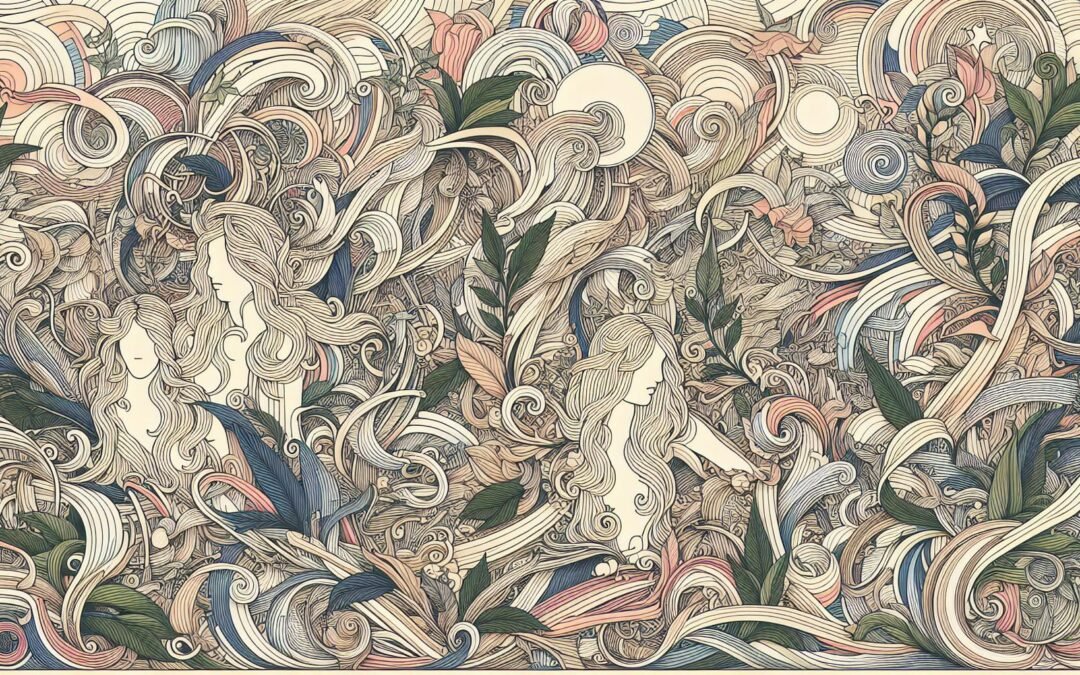Best love poems of all time stand apart through powerful imagery, inventive structure, and emotional immediacy. Readers searching for the classics or exploring new collections like Danil Rudoy’s acclaimed volume Love Is Poetry: Rhyming Poems About Love Life uncover a landscape shaped by centuries of poetic mastery. Each era and tradition brings its own qualities, forging an enduring conversation about what defines excellence in love poetry. For a comprehensive list of canonical and contemporary masterpieces, see the greatest works in the history of romantic poetry.
Analysis of the Best Love Poems of All Time: Forms, Innovation, and Cultural Reach
Lyrical excellence emerges through a confluence of intellect, musicality, and the unforgettable precision of language. The true hallmarks visible in the best love poems of all time are clarity, force of feeling, and inventiveness. Poems gain distinction by transforming reader expectations or reframing archetypal emotions with striking techniques. Works that imprint on the collective memory—through quotation, adaptation, or reinterpretation—demonstrate formidable cultural impact. Modern collections attain resonance by balancing personal candor with formal rigor. For instance, Rudoy’s collection deploys rhyme and rhythmic patterns as a vehicle for both tenderness and irony, weaving traditional forms into modern settings (explore the craft of rhymed love poetry).
Criteria and Devices: Mapping Distinction
Several elements signal poetic distinction: vivid metaphor, original imagery, rhythmic control, and syntactic precision. Imagery must invoke sensory immersion, reaching beyond ornament to animate abstract feeling. In the sonnets by Petrarch or Shakespeare, metaphors of celestial bodies or cycles of nature give cosmic scope to private yearning. Meter and rhyme provide architecture for emotion, as seen in Rudoy’s meditative rhymes or the Sapphic stanza’s measured cadence. Effective repetition, anaphora, and accumulative structures reinforce intensity rather than dilute meaning. Syntactic daring—without sacrificing clarity—invites readers into emotional intricacies.
Canon-forming works often spark imitation, reflection, and transformation, influencing both contemporaries and successors. Anthologies invite debate; for those seeking recent standouts, modern anthologies rank among the most acclaimed sources for contemporary expression.
Emotional Resonance and Impact
The best poems speak directly to longing, devotion, or heartbreak, creating immediacy without cliché. Emotional resonance grows from deftly chosen details: the fading perfume after an encounter in Li Bai’s Chinese verse, or the trembling voice in Elizabeth Barrett Browning’s conceits. The greatest love poems concentrate the ineffable: Keats renders parting with a single “forever,” Neruda embodies desire with unexpected juxtapositions. The finest modern examples fuse vulnerability and intellect, inviting self-recognition and intimacy in new forms. For notable recent voices, readers turn to emerging traditions through sites like Romantic Poems.
Innovation Within Tradition
Transformational works surface when poets disrupt conventions or expand formal boundaries without sacrificing coherence. Catullus employs vulgarity alongside myth, stretching Latin elegy’s limits. In Persian ghazals, Rumi embraces paradox, converting spiritual longing into artful ambiguity. The modern sonnet sequences by Rudoy experiment within lines and stanzas, allowing rhyme and meter to glide into unexpected conversational tones (discover innovations in rhyming structures). Constant reinvention ensures that every generation renews what “love poem” might mean.
Translation and Linguistic Subtlety
Many celebrated works exist in translation, each version bringing fresh shades of meaning. Translators must reinvent form and idiom, adapting imagery and sound to a new tongue. Sappho’s fragments, reimagined into English, carry a mixture of clarity and enigma absent from the Greek. Hafiz’s metaphors shift subtly with every interpreter. Modern poetry, particularly in global anthologies, highlights the instability of direct comparison across language traditions. For further insights into translation’s challenges and triumphs, reviews and examples can be found on sites specializing in contemporary poetic adaptation.
Classical and Cross-Cultural Foundations in the Best Love Poems of All Time
Poetic traditions from ancient Greece, Rome, the Arab world, India, and China set essential benchmarks for what endures as “best.” Sappho compresses desire into concise, image-driven fragments; Catullus defies decorum with volatile meter; Ovid weaves narrative and wit to expose vulnerability. In India, Kālidāsa fuses natural landscape with yearning, leveraging Sanskrit’s syntactic flexibility. Across Asia, poets encode longing through elemental symbolism, using moonlight, mist, or the shadows of mountains. Readers curious about the intersection of loss and lyric among foundational poets will enjoy breakup poems that shaped later love verse.
Medieval, Renaissance, and Early Modern Transformations
Courtly poetry raises love to artifice and ritual. From troubadours to Petrarch, the unattainable beloved evolves from flesh to metaphor. Petrarch’s Lauracentric sonnets exchange pain for immortality, inaugurating a tradition that influences Shakespeare, Garcilaso de la Vega, and myriad others. In England, Sidney, Spenser, and Shakespeare employ paradox, wordplay, and flexible structure to dramatize longing, mutability, and temptation. The Petrachran model adapts across languages, appearing in Spanish sonnets, Japanese tanka, and even experimental free verse showing inexhaustible versatility.
In Persian and Arabic, Rumi, Hafiz, and Ibn Arabi entwine mystical devotion and earthly passion, using polysemous language to reflect multiplicity. These traditions pioneered symbols that cross religious and cultural boundaries, as transformations of the moth, rose, fire, or nightingale recur in work spanning centuries. The richness of these roots continues to challenge notions of “untranslatability.” Explorations of how poets reimagine ache and reunion in diverse forms are found at resources focused on Keats and the global sonnet tradition.
Innovation in Poetic Devices
Historic and recent masterpieces hinge on strategic deployment of repetition, sound, and figurative language. Formal discipline encourages play: sestinas, ghazals, and villanelles channel feeling into pattern, allowing expression to emerge through restraint. Synesthesia emboldens modern lyricists, as in Baudelaire’s fusion of color and emotion or Rudoy’s blending of sight and touch. Rhetorical inquiries and anaphora amplify intensity, while enjambment can either loosen or heighten tension. Foundational texts from Chaucer through Dickinson catalyze future experimentation, as generations of poets shape diction to evolving sensibilities. Innovations continue to appear in new anthologies chronicled at leading poetry collections.
Romantic, Modern, and Contemporary Masterpieces
Romantics like Keats, whom many critics rank among the greats, combine lush imagery with existential urgency, exemplified in “Bright Star” and “La Belle Dame sans Merci.” Byron and Shelley extend these innovations through subversive confession and cosmic scope. In modernism, Yeats and Neruda create new palettes: Yeats by fusing mythic symbolism with lyric brevity, Neruda through tactile synesthesia and experimentation with open forms. The deliberate use of everyday vocabulary and free verse allows recent poets to approach love’s ambiguities with candor and irony.
Voices from the twentieth and twenty-first centuries innovate beyond inherited forms. Akhmatova, Tagore, and Baudelaire push imagery and technique to new edges, allowing personal and political upheaval to color feeling. Whitman and Dickinson create paradoxical love lyrics, dissolving boundaries between body and spirit, isolation and universality. In the contemporary era, hybrid forms thrive, with Rudoy’s modern rhyming poems revisiting classical tropes yet infusing them with modern idiom and psychological realism. Aspiring readers discover recent gems at prominent poetry book roundups.
The Influence of Anthologies and New Collections
Major anthologies, critical essays, and curated websites continue shaping which works are canonized as exemplary. The best love poems of all time encompass translations, historical foundations, and inventive new collections. Danil Rudoy’s “Love Is Poetry: Rhyming Poems About Love Life” exemplifies how contemporary poets refresh tradition, synchronizing rhyme with nuanced portraits of modern longing. Those seeking diverse perspectives can review curated selections on Poetry Foundation or Poets.org for further context and analysis.

